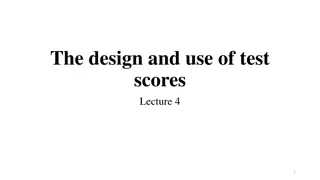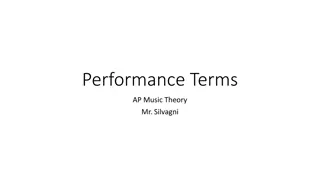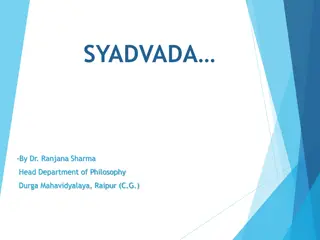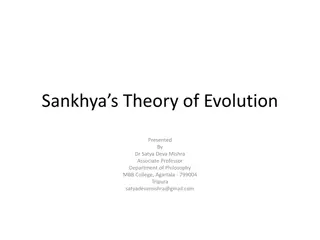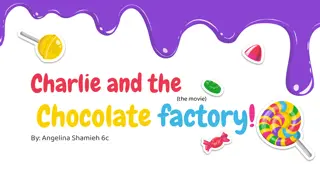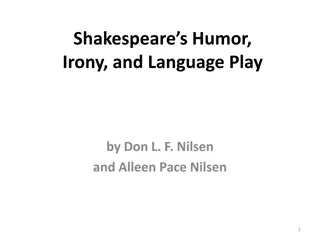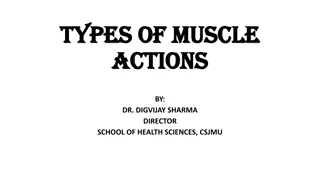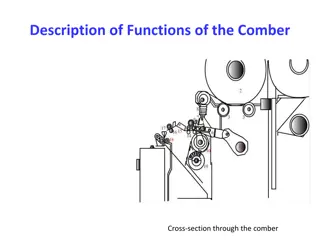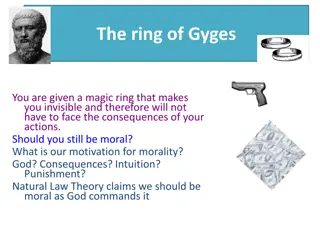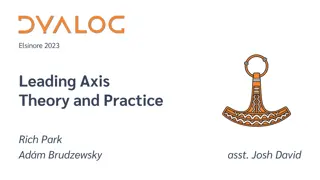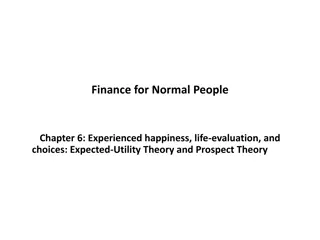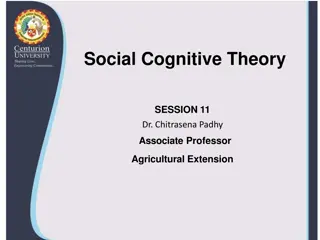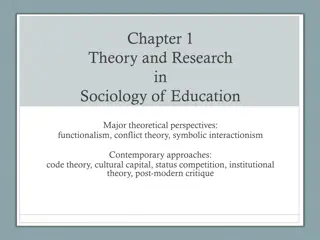Eccentric Training: Theory, Application, and History Explained
Explore the in-depth guide to eccentric training presented by Jan Cacek, covering the history, benefits, risks, and practical applications of eccentric muscle contractions. Discover how eccentric exercises can enhance muscle strength and performance while minimizing energy consumption. Gain insights into the origins of eccentric training and its significance in sports conditioning and performance improvement.
Download Presentation

Please find below an Image/Link to download the presentation.
The content on the website is provided AS IS for your information and personal use only. It may not be sold, licensed, or shared on other websites without obtaining consent from the author. Download presentation by click this link. If you encounter any issues during the download, it is possible that the publisher has removed the file from their server.
E N D
Presentation Transcript
Eccentric training: theory, application and periodization Jan Cacek, FSpS MU, Brno, Czech republic jan.cacek@gmail.com
Something about me Jan Cacek my sports career: runner 800 a 1500 m, soccer player, ice hockey player 3 children (17 14 11 years old) Vice dean for research and science FSpS MU Chairman of the National Association of Strength and Conditioning Trainers of the Czech Republic Head of division of Track and Field FSpS MU Study program guarantor Personal and Strength and Conditioning Trainer Chief editor of the Journal Studia Sportiva Member of the Methodological Committee of the Czech Athletic Federation and Rowing federation Track and Field and Strength and Conditioning trainer Coach of many elite athletes from different sports disciplines
Lecture structure Theory: History of eccentric training Possibilities of using eccentric training Benefits of eccentric training Risks of eccentric training in preparation
History of eccentric training 1882 - Fick found that the eccentric contraction muscle could produce more strength than concentric muscle contraction. A.V. Hill - The body has a lower energy consumption in eccentric muscle activity compared to concentric muscle work 1953 - Asmussen introduced the concept of eccentric exercise The term "eccentric", with "ex" meaning away from and "centric" = exercise away from the center of the muscle Lindstedt et al. - In eccentric contraction, we talk about negative work. function is creating braking force Mechanical Work in Muscle Activity E = F (- L) F = force L = change in muscle length Concentric work - the muscle shortens - L is therefore negative and the final work is positive Eccentric activity - muscle extends, L is positive and resultant work negative (negative)
Eccentric contraction Muscle is prolonged when the muscle load is greater than the force produced (Hamill, Knutzen, 2006). The reason for the load may be: gravitation, supramaximal loads with values exceeding 1RM antagonist activity Eccentric contraction load moves downward (in the direction of gravity) Muscles brake and control movement down, not initiating movement (deceleration) The eccentric load requires only about 1/6 - 1/7 of the amount of O2 than in concentric mode with the same load (Bigland-Ritchie & Woods in Lastayo et al, 1999) Eccentric exercise requires a lower level of control Brady, D., 2012)
Eccentric contraction prolonged muscle absorbs mechanical energy which: it can be dispensed in the form of heat it is temporarily stored as a back energy potential of the so-called deformation (elastic) energy and subsequently used strech-shortening cycle improves muscle work economy by up to 50% (Hamill, Knutzen, 1995, p. 87-89) Enoka, 1996)
Stretching phase longer than 0.9s - concentric phase = lower power production Only concentric movement SSC Electromyography: Characteristics of Produced Strength of Lower Leg Extrensors in Elite Weightlifters During Isometric, Concentric and Variable SSC Cycle H kkinen K; Komi P V; Kauhanen H., 1989. International journal of sports medicine 1986;7(3):144-51 In: https://www.david.fi/technolo gy/design/effectiveness/
Mechanisms associated with force increase in eccentric contraction Exist three theories but they are not explored enough. Proprioceptive afferentation (transfer of information to the Brain) the threshold of alpha motoneuron irritation decreases and therefore eccentric contraction is sometimes referred to as the contraction with the most powerful recruitment of motor units irritation of both Muscle spindles (muscle lengthens) and Golgi muscle tendon (muscle develops tension and therefore increases tension at the transition of muscle and tendon) Concentration contraction does not maintain increased afferentation from both receptor types motor unit recruitment is in reverse order to concentric contraction - clearly not proven
Acute Effect of Eccentric Exercise = Structural Damage to Muscle and Reduction of Functionality At functional level the effect results in: Reducing muscle strength change the optimal muscle length increase in passive muscle tension delayed onset of muscular serenses (DOMS) increasing serum muscle protein, muscle edema chronology of muscle damage - different, may take several days = reduces performance and increases the risk of movement injury
Benefits of eccentric training for athletes Benefits of eccentric training for athletes Increase in muscle strength Injury prevention - hamstrings Positive effect on tendons and bone tissue Minimizing symptoms of delayed onset of muscle pain (DOMS)
Increase Increase in in muscle muscle strength strength Baroni, B. M. et al (2014) Eccentric Training - Progress of Eccentric Strength 10-60% (0.5% to 3.5% / Training Unit) Significant better than by concentric training (only half-intervention studies) The increase in strength depended on: Intervention design Frequency - there is no difference between 4 training session / week and 2 - 3 session / week duration of intervention program (4-8 weeks = 2.16% / TS; 9-12 weeks = 1.49% / TS; greater than 12 weeks = 0.78% / TS). volume, intensity - 3 - 5 series, 6 - 10 reps, 2 - 4 times a week The angular velocity Exercise type - isotonic exercise showing higher progression of strength than isokinetic Mobility of joints Muscle groups Entry level of strength Gender (men more than women) Ages (young men higher than older men)
Neuromuscular adaptation increased ability to activation agonist muscles improving inter-muscle coordination reduction of antagonist muscle activation - inconsistent conclusions (Stability Of Joints versus Peak torque) higher capacity for activation of motor units in eccentric contraction (NO for concentric) = specificity for type of contraction
Structural adaptation First theory the muscle adapts by changing its resting length the number of sarcomers increases in series and the muscle is more prolonged (Brockett et al., 2001). Second theory: after the first intensive stage of eccentric exercise, the weak fibers are reduced stronger and more resilient fibers remain and have a protective effect (Armstrong et al. In. LaStayo et al., 2003). Chronic eccentric load causes more muscle fiber strength. This strength is important in stretching the muscle, where it protects the muscle from excessive damage Exc. training increases the amount of muscle mass - leads to an increase in muscle fiber cross-section - associated with the growth of both the number and cross-section of myofibrils - the role of satellite cells It is not yet known what volume of work, exercise intensity and rest intervals are optimal for hypertrophy
Baroni, B. M. et al (2014)
Effect of eccentric training on speed and explosive power Cook et al. 2013: Comparison of 4 training programs, (3 weeks, 20 rugby, squats, bench): eccentric, concentric, eccentric + overspeed, concentric + overspeed the biggest effect on speed and explosive power = Exc. + overspeed Only the eccentric training improved onlythe maximum power CONCLUSION: a combination of resistive eccentric training with training in which there are incentives for explosive strength and speed is recommended Wirth et al. (2015) examined the effects of eccentric training on maximum and explosive strength in untrained (6 weeks, unilateral legpress in eccentric phase) 31.1% maximum strength improvement the improvement in explosive power (jump with counter-motion) was nonsignificant The Wirth study supports Cook's results eccentric training with resistances alone will not cause positive changes in speed and explosive force indicators Exc. training with specific exercises in terms of mechanics (speed, angles )
Injury prevention and performance - hamstrings The most frequent injuries of hamstrings arise at the initial contact with ground (Guex et al, 2016) The ratio of flexors to knee extensors Problem = mostly hamstrings especially for sprinters Lysholma and Wiklander (1987) report injured hamstrings = 11% of running injuries except for muscle injuries, the tendon hamstring is also overloaded https://www.google.cz/search?q=terminal+swing+phase&client =firefox-b- ab&biw=1540&bih=822&source=lnms&tbm=isch&sa=X&ved=0a hUKEwizh7mLsMLQAhUHBsAKHaxMAEwQ_AUIBigB#imgrc=scF5 srkGLW1dGM%3A
Schache et al, 2013 Hamstrings and Performance 288/5000 As the speed increases, the importance of the ratio between hamstrings and quadriceps increases H/Q ratio is associated with a good/bad running economy (Sundby and Gorelick, 2014) it is therefore recommended, in particular for sprinters, to include eccentric hamstring exercises to improve their H/Q ratio
Hamstring injury and eccentric training Askling, Karlsson and Thorstensson (2002) investigate the effect of an eccentric strength program on the incidence and severity of hamstring injury (n = 30) The experimental group realized eccentric hamstring training (1-2 times per week, 10 weeks) using a special devices Diagnosed isokinetic strength of hamstrings before and after the intervention program all hamstring injuries 10 months after the end of the intervention. Results: the incidence of hamstring injury was clearly lower in the training group (3/15) vs. the control group (10/15) there was a significant increase in strength and speed in the training group
Positive Positive effect effect on on tendons tendons Eccentric exercise = there is action of large forces on muscle-tendon transition When the acting force is greater than the muscle itself can create, there is a risk of damage to muscle, tendon, insertion Eccentric training has a positive effect on muscle and tendon status = treatment of tendopathies Adaptation to eccentric training stimulation by eccentric exercise leads to collagen formation and increased fibroblastic activity - tendon hypertrophy (better muscle-tendon transfer) tendon becomes stronger in tension - normalization of glycosaminoglycan levels increasing the energy absorbing capacity of the muscle - reducing the risk of excessive stretching
Chronic tendinopathy of Achilles tendon Painful tendon thickening Especially for runners due to tendon overload = degenerative process Mumbleau, 2013 Symptoms: increased level of glycosaminoglycans, irregular structure and arrangement of fibers, no inflammation morning stiffness pain limiting movement - the greatest after exercise new formation of blood vessels Cuff, 2014 Recommendation: Alfredson's exercise protocol 12 weeks, 3 x 15 reps, 2 times a day with straight and bent knee exercise is slow, we increase intensity when exercise is pain free (Habets et al, 2015)
Langsberg et al. - 12 soccer players (6 healthy controls, 6 with Achilles tendon, 12 weeks eccentric exercise) confirmed the effectiveness of this type of treatment - eccentric exercise stimulates the synthesis of type I collagen in the area of the damaged tendon. as a result of the improvement of the tendon structure, pain increase and tendon adaptation to the load also occur Fahlstr m et al. (2003) combination of eccentric exercise and stretching - application of 12 weeks to patients with pain: middle part of the Achilles tendon (78 patients, 101 affected tendons) with tendon pain of this tendon (30 patients, 31 affected tendons) in the group of middle tendon pain, 89% of them experienced pain relief after treatment, and returned to an earlier stage of activity the remaining 11% = women, higher BMI In patients with tendon tendon pain - 32% tendons improved the difference in the results of this group may be due to the different source of pain (bursa, bone) and not the tendon (Fahlstr m et al., 2003).
Bahr, et al. (2006) compared the effects of surgical treatment with eccentric training of patellar tendinopathy 35 patients, divided into two groups 1. gr. surgical treatment with subsequent rehabilitation 2. gr. eccentric strength training - squats on 25 inclined plate (3x15 - 2x daily, 12 weeks) The Victorian Institute of Sport Assessment (VISA) - (range 0 - 100), based on questionnaire responses specially developed for patellar tendinopathy. three, six and twelve months of follow-up both improvement groups (p <0.001) the mean VISA score for both groups increased from 30 to 49 (95% CI, 42 to 55) at three months, 58 (95% CI, 51 to 65) at six months, and 70 (95% CI, 62-78) for twelve months there was no superior efficacy of surgical treatment compared to eccentric strength training
Jumpers knee - Patellar tendinopathy Typical of jumpers and sprinters - high demands on knee extensors Occurrence can be up to 50% Symptoms pain under the paw - especially after exercise (walking up stairs, jumps, squats) In the advanced stage of pain, the workload is disabled changes in tendon structure and vessel formation, inflammatory origin not proven Cause excessive tendon stress (high intensity exercise) Jonsson and Alfredson (2005) looked at the different efficacy of eccentric and concentric training in 15 patients with long-term ligamentum patelae involvement. Training unit twice a day for 12 weeks) Eccentric and concentric training, one exercise, three series, 15 reps after 6 weeks the work of the concentric group was interrupted - without positive results eccentric training -l relieving pain and allowing a return to previous (pre-trauma) training activity in 90% of patients. long-term effect after less than 3 years http://www.aidmyachilles.com/tendon- muscle-injuries-in-the-leg/tendinitis-of-the- patellar-tendon.php
Minimizing symptoms of Minimizing symptoms of D Delayed elayed onset muscle onset muscle soreness soreness (DOMS) (DOMS) Appears when the intensity or volume of an eccentric exercise suddenly increases, or an unusual high intensity movement is performed (Nosaka, Newton, 2002) In athletics typically - downhill running, overspeed, endurance runs in the field Plyometric training Eccentric training for beginners Cause disrupting the sarcomere structure and damaging the excitation-contraction coupling mechanism (Warren et al. in Proske, Morgan, 2001, p. 333) http://rbhfitness. blogspot.cz/2015 /01/delayed- onset-muscle- soreness- doms.html Typical symptoms decreased muscle strength increase in serum creatine kinase, damage to the muscle fiber structure, Inflammation, increasing the activity of proteolytic enzymes and pains (Stupka et al., 2001). minimization = eccentric exercise performed according to the principles of adequacy and sequence (low intensity at the start of stimulation) symptoms of pain = result of poorly controlled training
RISKS OF ECCENTRIC TRAINING Acute injury Exercise technique = 2/1, jumps If the muscle produces the same torque at both concentric and eccentric contractions, fewer motor units are involved in eccentric contraction. greater risk of muscle and other connective tissue damage - fewer muscle units produce a given strength, overload and easier injury to muscle (McHugh, 2003). More frequent damage = fast muscle fibers (Frid n et al. In McHugh, 2003). Chronic injuries Spine Joints Overload DOMS, Non-respect of training principles Overtraining
Trends and possibilities of using eccentric training The recovery time between training sessions should be at least 24-48 hours (Nosaka, Newton, 2002). Types of eccentric training according to Mike, Kerksick a Kravitz In: Hor k, (2016)
The Most Effective Eccentric Exercise For Progress For Athletes = Isotonic, Less Effective Isokinetic, Least Effective Isometric Bridgeman et al. recommends using SSC exercises for athletes whose performance has SSC character - drop jump the length of contact with the pad should correspond optimally with the length of contact in the competition conditions during the exercises
Conclusion Conclusion significant physiological adaptations due to eccentric loading are manifested in both concentric and eccentric muscle activities for sprinters to combine with training speed or supramaximal speed Specific performance requires specific adaptation and that specific stimulus = mechanics, energy, coordination Eccentric training increases tendon strength and positively stimulates skeletal minerals Exc. Training acts as a prevention of hamstring injury, reduction of DOMS manifestations, therapeutic effects on patellar tendinopathy and tendonopathy of Achilles tendon. Eccentric Exercises are recommended to include - the prerequisite for the application of eccentric training is excellent strength preparation (concentric 1RM training), technical level and part of the RTC


















